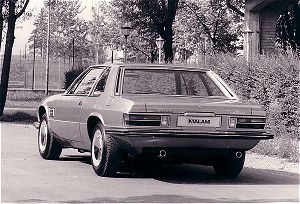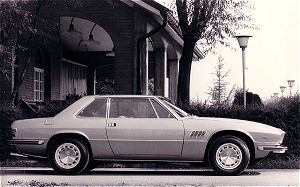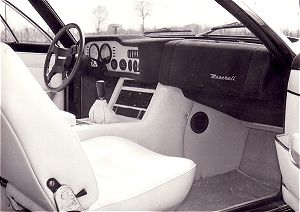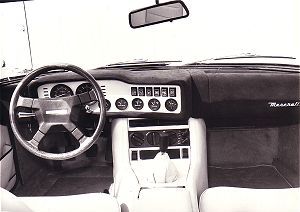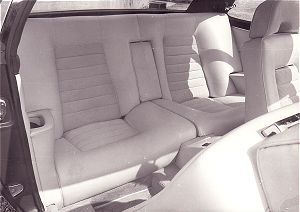| The Kyalami
"Kyalami ...a motor racing circuit in South Africa." |
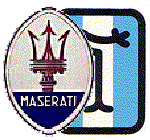 |
||
|
|
|||
|
For the origins of the Maserati Kyalami we must go back to 1972. That year, at the Turin Motor Show, DeTomaso Automobili launched their 'Longchamp', a two-door coupé, to accompany their 'Deauville' four-door saloon. DeTomaso called on American Tom Tjaarda, chief designer at Ghia (at that time also owned by DeTomaso) who produced a conservative looking design with a sharply angled front grille, two large rectangular headlights (a la Ford 'Granada') and wrap-around front and rear bumpers. The Longchamp was a four-seater coupe, powered by a 5.8-litre V8 Ford 351 Cleveland engine. |
|||
1972 - The DeTomaso 'Longchamp'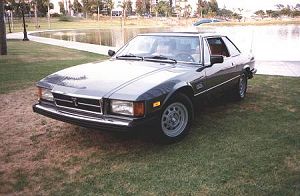 Pictures courtesy of DeTomaso |
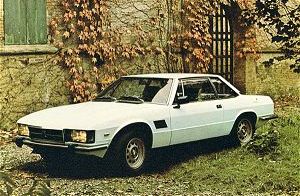 |
||
| 1980 - The DeTomaso 'Longchamp GTS' - note the flared wheel arches and wider wheels. | |||
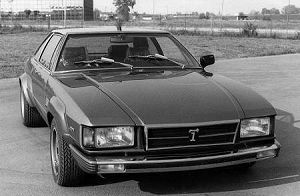 Pictures courtesy of DeTomaso |
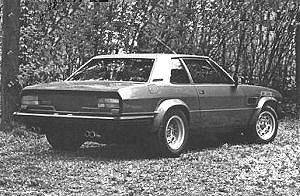 |
||
In 1974 after a period of financial turmoil, Citroën, the then owners of Maserati, placed the company into liquidation. By 1975, Maserati was in the hands of a partnership berween Alejandro DeTomaso and GEPI (an Italian state organisation whose sole purpose was the protection of Italian jobs). DeTomaso's Longchamp had not proved the success he had hoped and sales were low. During this time of re-organisation, DeTomaso was desperate to produce a new flagship Maserati. Given Maserati's financial restraints, his solution was to call in Pietro Frua's design studio in Turin to re-style the Longchamp and so was born the Kyalami. |
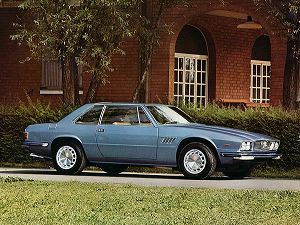 |
||
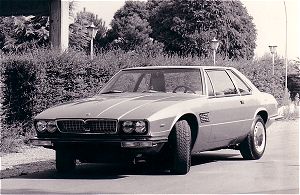 |
The Kyalami, factory designated the Tipo 129, was launched at the Turin Motor Show in 1976. The Kyalami didn't follow the Mistral, Ghibli and Khamsin tradition of naming models after a wind, but followed another tradition of naming its cars after the scene of its racing successes. This model was named after one of the world's great race tracks, Kyalami in South Africa, where in 1967 a Maserati-engined Cooper, driven by Pedro Rodriguez, won the South African Grand Prix; the Cooper Maserati was powered by Maserati's 12-cyl Tipo 10/F1 engine. |
||
|
The Sebring - In 1957, Juan Manuel Fangio and Jean Behra won the Sebring 12 hours in a Tipo 450S. |
||||||||||||||||||||||||||||||||||||||||||||||||||||||||||||||||||||||||||||||||||||||||||||||||||||||||||||||||||||||||||||||||||||||||||||||||||||||||||||||||||||||
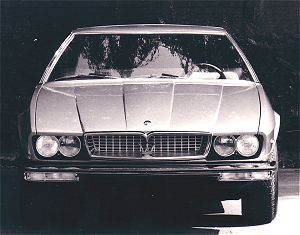 |
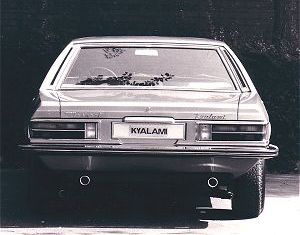 |
||
Sig. Frua's changes improved Tjaarda's design considerably. His design was some 25mm lower (largely due to its lower waistline), 50 mm longer and 20 mm wider than Tjaard's. He gave the front a softer look by replacing the two large rectangular headlights with four traditional round headlamps and designing a slimmer front bumper. He rounded off the corners of the new shallower front grill and introduced two more character lines on the full width rear opening bonnet allowing excellent access to the engine. At the rear new slimmer wraparound chrome bumpers, new wraparound rear lights, ventilation outlets either side of the rear window. These changes enhanced its classic elegant appearance; the end result was an overall design reminiscent of Vignale's Mexico. |
|||
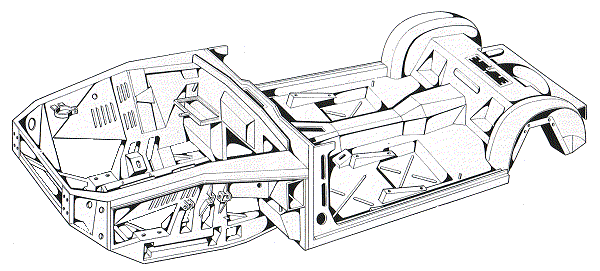 |
|||
A road test carried out by Autocar magazine in July 1978, gave the Kyalami a top speed estimated at 147 mph in fifth (they recorded 134 mph in fourth). Acceleration from zero to 60 mph in 7.6 seconds and from zero to 100 mph in 19.3 seconds. The same year, Autosport magazine recorded similar figures. |
|||
In 1978 it was available with a 4.9-litre engine, developing 280 bhp @ 5600 rpm, tied to a Borg Warner 3-speed automatic transmission as standard, the 5-speed manual gearbox being optional. |
||||||||||||||||||||||||||||||||||||||||||||||||||||||||||||||||||||||||||||||||||||||||||||||||||||||||||||||||||||||||||||||||||||||||||||||||||||||||||||||||||||||
In the UK in 1978, the Kyalami was priced at £21,189.90p including Car Tax and VAT. |
||||||||||||||||||||||||||||||||||||||||||||||||||||||||||||||||||||||||||||||||||||||||||||||||||||||||||||||||||||||||||||||||||||||||||||||||||||||||||||||
Many purists still don't class the Kyalami as a 'true' Maserati because of its DeTomaso background. They couldn't be more wrong, for when DeTomaso instituted the changes to the Longchamp, he knew exactly what was expected from the Casa del Tridente by its customers. With Frua's exterior restyling, the spacious and luxurious interior, the power and reliability of Maserati's V8 engine and of course the Trident badge, the Kyalami may not be a classic in terms of body styling, but a Maserati grand tourer it most definitely is! |
|||
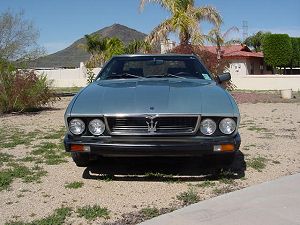 |
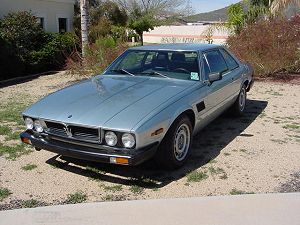 |
||
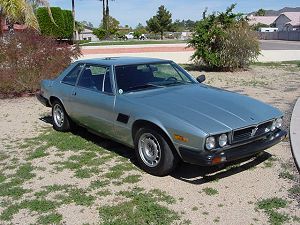 |
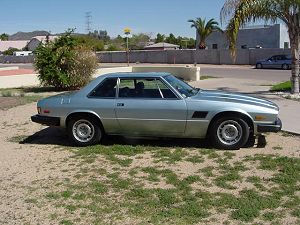 |
||
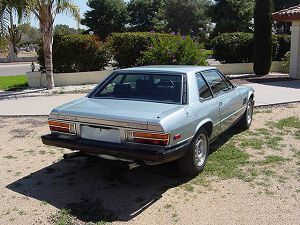 |
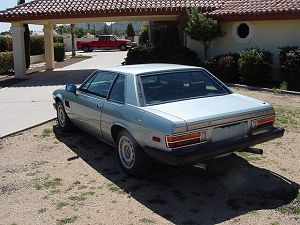 |
||
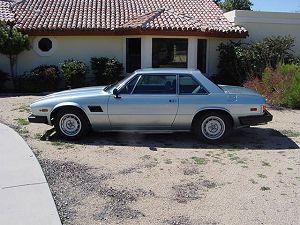 |
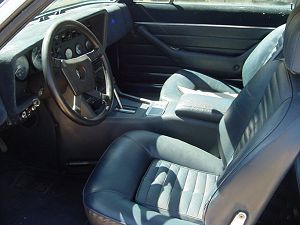 |
||
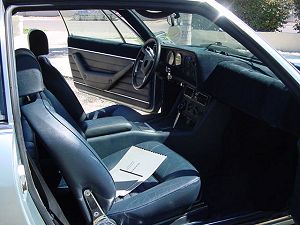 |
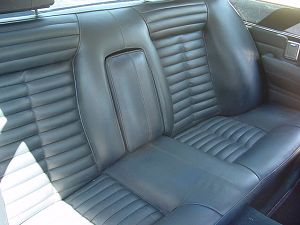 |
||
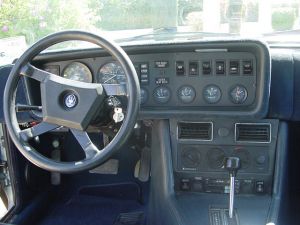 |
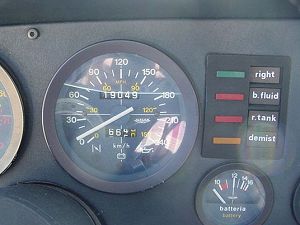 |
||
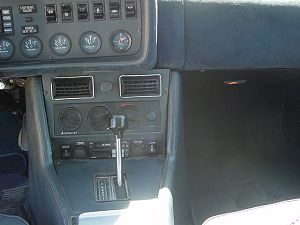 |
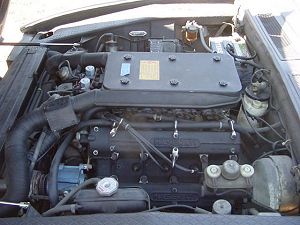 |
||
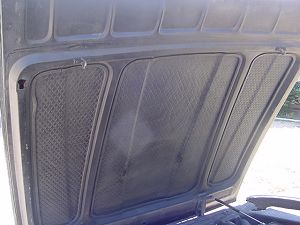 |
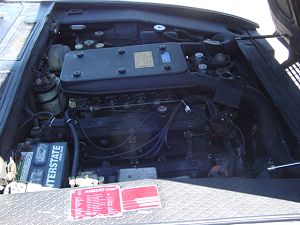 |
||
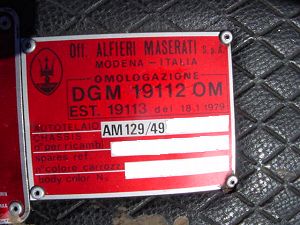 |
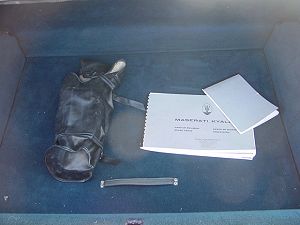 |
||
| TECHNICAL DATA - TIPO 129 | |
| Body type | 2-door 2+2-seater sports coupé |
| Production years | From 1976 to 1983 |
| Engine | Front engined V8 cylinder @ 90° |
| Bore and stroke | 88 mm X 85 mm |
| Engine capacity | 4136 cc |
| Compression ratio | 8.5:1 |
| Maximum power | 265-bhp @ 6000 rpm |
| Distribution | Four overhead camshafts, two valves per cylinder |
| Induction system | No 4 twin-choke down-draught 42 DCNF Weber carburettors |
| Ignition | Single with Marelli distributor |
| Lubrification | Forced with pressure pump |
| Transmission | Rear wheel drive |
| Differential | ? |
| Clutch | Dry single plate |
| Gearbox | Manual 5-speed and reverse (optional automatic transmission) |
| Chassis | Integral body chassis construction |
| Front suspension:- | Independent wheels, coil-springs, telescopic shock-absorbers and anti-roll bar |
| Rear suspension:- | Independent wheels, coil-springs, telescopic shock-absorbers and anti-roll bar |
| Brakes | Hydraulically operated disc brakes on all four wheels |
| Wheelbase | 2600 mm |
| Wheel tracks | Front 1530 mm Rear 1530 mm |
| Tyres | Front:- 205 x 15 Rear:- 205 x 15 |
| Dry weight | 1550 kg |
| Overall length | 4580 mm |
| Overall width | 1850 mm |
| Overall height | 1270 mm |
| Maximum speed | 240 kph |
| Models constructed | 200 |
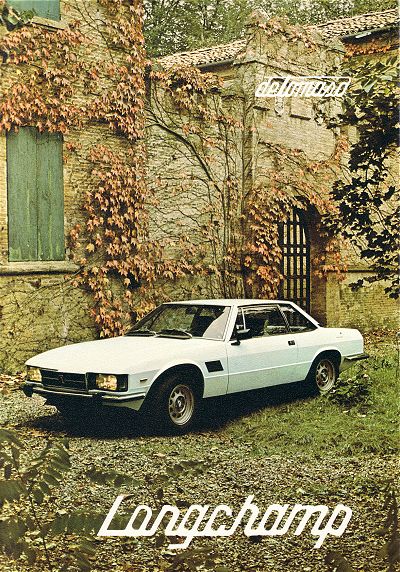 |
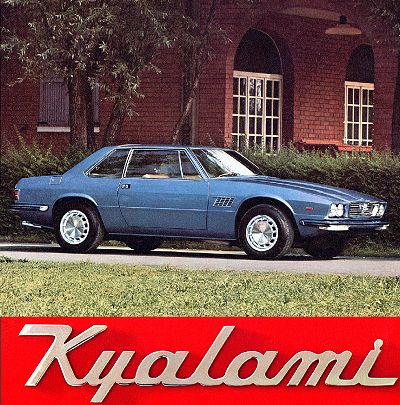 |
 |
|
To enter Enrico's Maserati Pages CLICK HERE! Copyright: Enrico's Maserati Pages - © 2003-2004. All rights reserved. |
